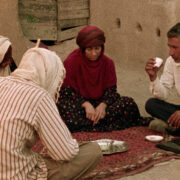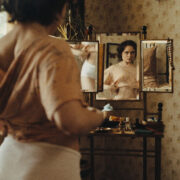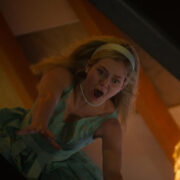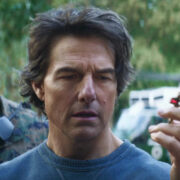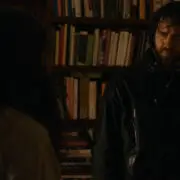The History of Hong Kong Action Cinema Pt. 1 – 1896-1930: The Pioneers
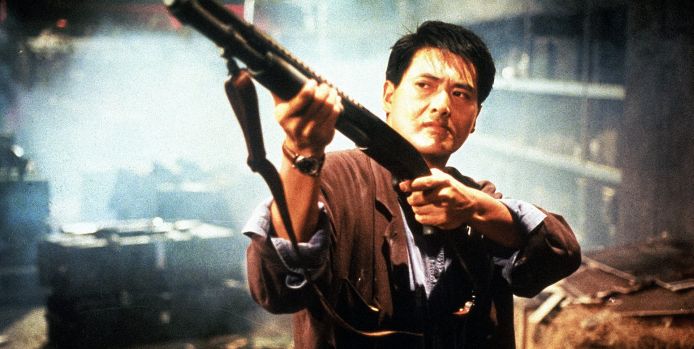
Massive film lover. Whether it's classic, contemporary, foreign, domestic, art,…
When I was young my Uncle Fred was our gateway to cool movies at a young age. He would babysit my brother and I, and going to the video store (yes, VHS) was the high point of the evening. After running the gamut of classic R rated action, and horror films we landed on the iconic movies of Bruce Lee. At this time Jackie Chan broken into the U.S. market and the brazen action films of John Woo were fixtures in my growing movie collection. At this time I was sure of one thing, if you wanted great action films, Hong Kong is where they came from.
A Love Letter To Hong Kong Cinema
What makes Hong Kong so important in the film industry is that it was one of the leading exporters of movies in the world, and that while it was just a small, coastal Chinese island that was leased to the United Kingdom. The early days of Hong Kong’s film industry is as intriguing as the area itself, and the reflection of this unique area would manifest a legacy of great films. Most parts of this “The History of Hong Kong Action Cinema” series will be broken into decades; uncertainties and political upheaval would upset Hong Kong and its resilient film industry. This first part of the series is going to focus on a wide span of time where a lot was going on in Hong Kong’s growing movie business, and the region itself.
A Brief History of Hong Kong
To get a feeling for the location, we’ll shortly consider the history of Hong Kong itself. In 1842, Hong Kong was leased to the United Kingdom for a period of 156 years. Due to its significance as a trade port, both China and the United Kingdom had a lot to gain by making this agreement. The location made it a profitable trading area, and the lease was a term that was a part of the Treaty of Nanking, ending the first Opium War. This marked a sea change in China and the island of Hong Kong when the small island became a British colony.
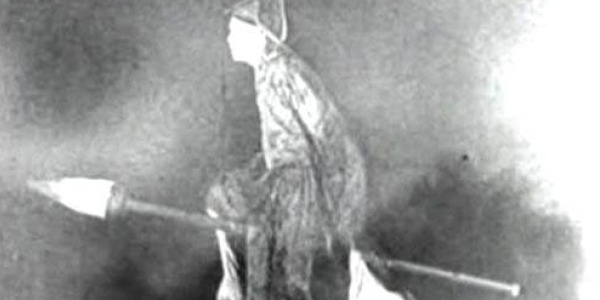
The result of this adoption by the UK made Hong Kong one of the more unique areas in the world both culturally and economically. The development and transformation of the once remote island into a modern metropolis is the result of a two major factors. The first is the cultural element: the people of Hong Kong maintained their customs without British interference. The second is the abundant capitalist infrastructure that blossomed under both British rule and low tax policies of The Peoples Republic of China. Thanks to the “One Country, Two Systems Act” the residents of Hong Kong could pursue various avenues of commerce, trade, and investments with a low risk of inflation. Although this financial information may seem dull, its effect on the film industry is crucial.
Early Days of Cinema in Hong Kong
Hong Kong became a curiosity in the film world as early as 1896, when the famed Lumiere Brothers shot footage there for their Actualities series. These shorts were, usually, forty, to fifty-seconds long capturing everyday scenes of life from around the world. Another pioneer of early filmmaking made the journey to the newly acquired British colony shortly afterwards: Thomas Edison’s film company shot a short film entitled Hong Kong Street Scenes and turned out to be the first commercial screening in Hong Kong.
However, it wasn’t until 1909 when the first narrative feature was shot in Hong Kong. Liang Shaopo directed a comedic short movie Stealing the Roast Duck, as a production for a Shanghai-based studio Asia Motion Picture Company, founded by an American named Benjamin Brodsky. Although the studio was based on the mainland, the film was shot in Hong Kong and is considered to be Hong Kong’s first feature.
However, due the studio’s location in the mainland raises debates about whether or not Stealing of Roast Duck qualifies as “Hong Kong’s first movie”. Unfortunately, (this will be a recurring theme) documentation of these early films is sketchy at best, and it wasn’t until 1913, that Brodsky collaborated with Lai Man Wai, who directed Zhuangzi Tests His Wife, a two-reel feature about a man who fakes his death to “test his wife” who then ends up being propositioned by another younger man.
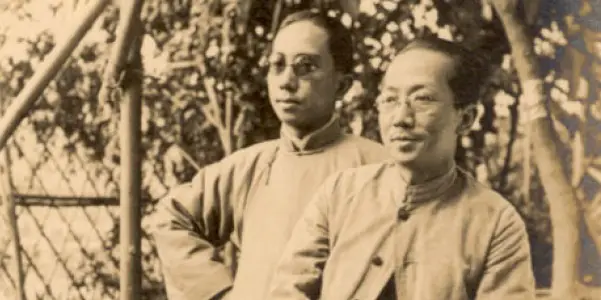
The film was successful and was the first movie from Hong Kong shown in the United States thanks to Benjamin Brodsky’s influence as a distributor. Lai Man Wai’s direction of Zhuangzi Tests His Wife would earn him the title as the “father” of Hong Kong’s film industry, making the first narrative short to be entirely shot, and produced in the Hong Kong region.
Despite the initial success of Zhuangzi Tests His Wife, Brodsky and Lai Man Wai’s newly founded studio suffered an early demise due to the outbreak of World War I. Since their film stock was imported from Germany, and the scope of that country’s role in WWI meant that the burgeoning movie business in Hong Kong led to an eight-year hiatus. This may have discouraged Benjamin Brodsky’s involvement in the film business, but Lai Man Wai ‘s career would continue.
First Fully Fledged Movie Studio in Hong Kong
After eight years of suspension, Li Man Wai would start the first fully fledged movie studio in Hong Kong with his brothers Lai Pak Hoi, and LaiHoi San; Minxin, or China Sun. The production of their first major film, Rouge, in 1925 was a long production that would yield positive results on its release. Rouge was Hong Kong’s first feature length film, and a major achievement for the filmmakers, as well as Hong Kong’s standing in the film world.
China Sun Studios were also producing Hong Kong’s first newsreels, and it seemed like the wheels were turning for the studio that had a good business plan, and was very family oriented. However, history would rear its head yet again, and the studio had more troubles on the horizon. Following the release of Rouge in 1926, the year of the Great Strike, in which hundreds of thousands of people participated. Businesses of all kinds shut their doors, among them movie theaters.China Sun had no choice but to move their operation to Shanghai, and Hong Kong had lost its first movie studio.
Hong Kong’s road to being one of the world’s largest movie exporting regions of the world was anything but smooth. The scattered and poorly accounted records of Hong Kong’s film industry credited some titles as Hong Kong productions, but are the property of The Peoples Republic of China. Even in the days of silent cinema, Hong Kong proved that their filmmakers could make entertaining and quality movies despite any number of hardships that they might encounter.
Early Wuxia and The Shaw Brothers
“Wuxia” – A term that translates as “martial hero”, commonly used to describe Chinese swordplay/fantasy films whose leads are chivalrous heroes
After the initial success of Zhuangzi Tests His Wife and Rouge, another family-oriented studio was on the rise. Runje, Runde, Runme, and Run Run Shaw founded Tianyi Studios in 1922. They started out doing what they did best: making entertaining movies. In 1925 they made what many consider the first Wuxia film, Swordswoman Li Feifei. Following the success of this early Wuxia film would be a slew of pictures that would set the pattern and model of martial arts movie-making, and the litigious way the Shaw Brothers would make films.
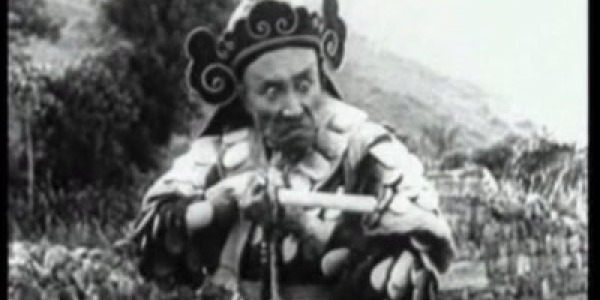
One of the most influential period dramas was Huo Yao’s Romance in the West Chamber, one of the first wuxia pictures featuring swordplay, fighting and a conventional narrative. Its influence and presence as one of the few films from the silent era of Chinese films makes it stand out in film history, and prints of this picture exist to this day. As a piece of film history, it is fascinating, and as a stand-alone movie it works on its own merits; both as an early narrative film as well as an early genre picture.
An interesting juxtaposition in Huo Yao’s seminal film Romance in the Western Chamber. The lead, a scholar named Chang Kung fantasizes about rescuing the “damsel in distress” Miss Tsui from a gang of bandits. He sets about doing that by riding his giant script brush through the air to her rescue. Ironically, this could imply “the pen is mightier than the sword”, but isn’t Hong Kong cinema all about the power of the sword? This is a scene of comic relief from an early film showing the versatility we would come to expect from Hong Kong cinema.
Martial Arts Mania
Although these early silent wuxia/swordplay films proved that there was a market for martial arts movies, it wasn’t until 1928, with the release of the first The Burning of the Red Lotus Monastery film, that was handsomely received, spawning the mania that developed in Asia for these kinds of pictures. Proof lies in the film’s massive success, leading to seventeen sequels, which resulted in nineteen hours of footage in the series.
This robust series feature heroic swordsmen, combat, even special effects. The heroes of these films, endowed with palm power, beams of energy with which they could control their flying swords and enhance their combat skills. These early films also founded the reverse jumping technique: by filming their actors jumping down in reverse made it look as if the characters could leap through the air effortlessly. This primitive camera trick was employed and became a trademark aspect of martial arts films to follow.
Another special effect was devised in order to portray the hero’s palm power: filmmakers would draw directly on the film negative to create beams of light and flying swords. Created as far back as the mid 20’s these are considered by Hong Kong cinephiles to be the earliest use of special effects in movie history. Despite the epic scope of The Burning of the Red Lotus Monastery series, no known prints of the film exist. However, Carl Dreyer’s Passion of Joan of Arc was thought to be lost forever, until a print was discovered in an asylum in Sweden in 1981, so who knows how long this lost title will be among the missing? Although no known prints of the film exist, some still images survive:
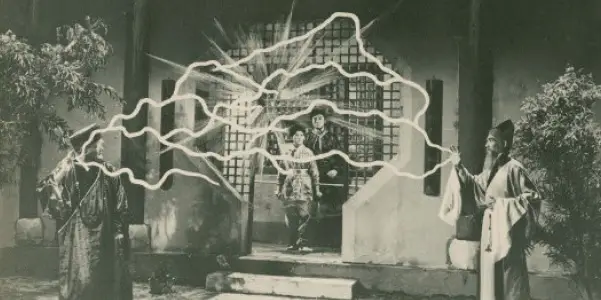
The End of an Era or New Golden Age?
Of all the titles produced at this time, a few still do exist and the proof their quality in production can be seen immediately. Some of these titles include Romance in the West Chamber from 1927, Swordswoman of Hauxing (1928), and Red Heroine (1929).
Hong Kong was building a strong base of studios at this time. The four Shaw brothers whose names will recur again throughout the history of Hong Kong’s action cinema had a solid foundation with their Tianyi studio. Although their studio was originally located in Shanghai, their satellite location in Hong Kong would be their base of production later on. Minxin Studios had established themselves as the founding fathers of Hong Kong cinema, and by the end of 1926, their troubles with the Great Strike had ended.
However, things in Guangzhou were not looking all that great either. Minxin, which had relocated from Hong Kong to Shanghai, was experiencing troubles of their own. Although Shanghai had earned the nickname “The Hollywood of the East” in the 1920’s, the movie business was struggling due to high taxes on film stock and government restrictions on Cantonese dialect films. The filmmakers who were competing between Hong Kong and Shanghai would soon transform into allies as an impending studio merger would prove to be a major game changer for the future of Hong Kong cinema.
By the 1930’s Hong Kong would no longer be in competition with its neighboring regions, but turn into one of the major players in the world cinema market.
In the next installment of this History of Hong Kong Action Cinema series, we’ll move on to the 1930’s, and we’ll discuss the rise and fall of an empire, talkies and the Japanese Occupation! If you have any questions or thoughts, please share them below.
(top image: Hard Boiled (1992) – source: Golden Princess Film Production)
Does content like this matter to you?
Become a Member and support film journalism. Unlock access to all of Film Inquiry`s great articles. Join a community of like-minded readers who are passionate about cinema - get access to our private members Network, give back to independent filmmakers, and more.
Massive film lover. Whether it's classic, contemporary, foreign, domestic, art, or entertainment; movies of every kind have something to say. And there is something to say about every movie.







